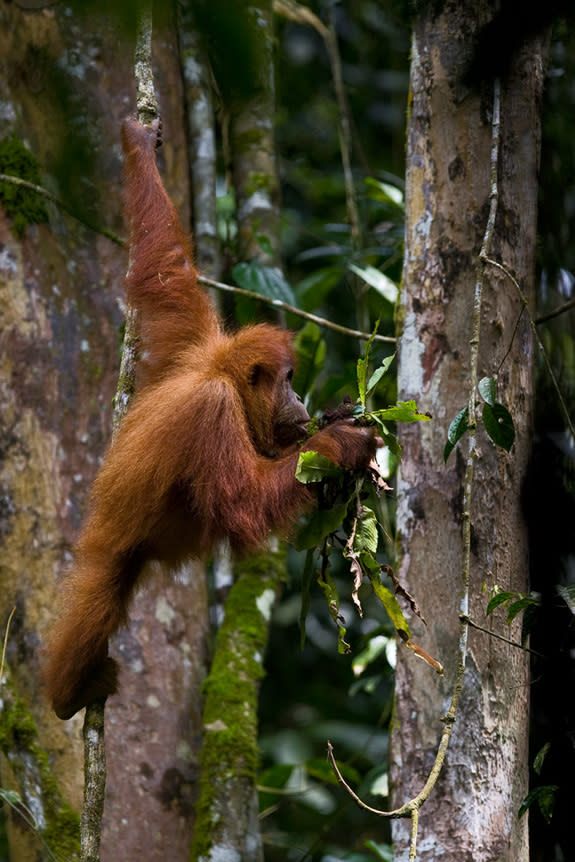Hear That? Orangutans Use Hands to Amplify Calls
When danger nears, orangutans warn their group with alarm calls, and new research shows that the animals sometimes cup their hands around their muzzles, making these calls louder and deeper.
The finding suggests that orangutans know how to change their sounds by using another part of their body, a behavior once thought to be unique to people, according to the international team of researchers. It could be that the animals are trying to make themselves sound larger and scarier when predators are near, they said.
"Orangutans are the only known primate besides humans to modify and enhance sound production through external manipulation," said one of the study's researchers, Adriano Lameira, a postdoctoral fellow of evolutionary anthropology at Durham University in the United Kingdom. [In Photos: Borneo's Quirky Species]
Researchers are used to hearing such alarm calls — sometimes called a "kiss-squeak call" — as they walk through the rainforests of Sumatra and Borneo to study orangutans. It's possible that the calls alert a potential predator to the fact that the orangutan has spotted it, according to the researchers.
The calls could be the orangutans' way of telling predators, "Don't try to sneak up on me because I've already caught you," said the study's lead researcher, Bart de Boer, a professor of language evolution at Vrije Universiteit Brussels.
Modeling orangutans
Primate sounds have long intrigued de Boer, and he has studied the vocal tracts of monkeys and apes, which share a common ancestor with humans. In his research, de Boer uses computer models of sound production, he said.
When de Boer learned that Lameira and his colleagues had recordings of wild orangutans making a modified version of the kiss-squeak call, and using their hands to make the sounds, he made mathematical computer models to study the kiss-squeak, he said.
He examined whether the modified kiss-squeak made the orangutans sound larger than they actually were. When a person plays a note on a musical instrument, the instrument produces a tone and an overtone (a harmonized series of notes), he explained.
"The bigger the instrument, the more overtones it produces," de Boer told Live Science. "In order to exaggerate size appropriately, you need to have more overtones."
One computer model showed that orangutans produce more low overtones when they cup their hands in front of their mouths, which, the researchers concluded, makes themselves seem larger than they actually are.
Another model showed that the handmade "sound box" lowered the pitch of the ape's call, making it sound deeper.
Earlier studies have shown that hand cupping is a learned behavior, much like language, de Boer said. These findings provide the first hint that an animal other than humans can learn to modify its vocalizations using another body part, he added.
He called the cupping tactic "an extra piece of the puzzle to understanding how language evolved." If orangutans have learned how to modify sound, maybe the ability "is older, evolutionary-speaking, than we thought," he said.
The study was published online today (March 18) in the Journal of Experimental Biology.
Follow Laura Geggel on Twitter @LauraGeggel. Follow Live Science @livescience, Facebook & Google+. Original article on Live Science.
Copyright 2015 LiveScience, a Purch company. All rights reserved. This material may not be published, broadcast, rewritten or redistributed.

 Yahoo News
Yahoo News 


